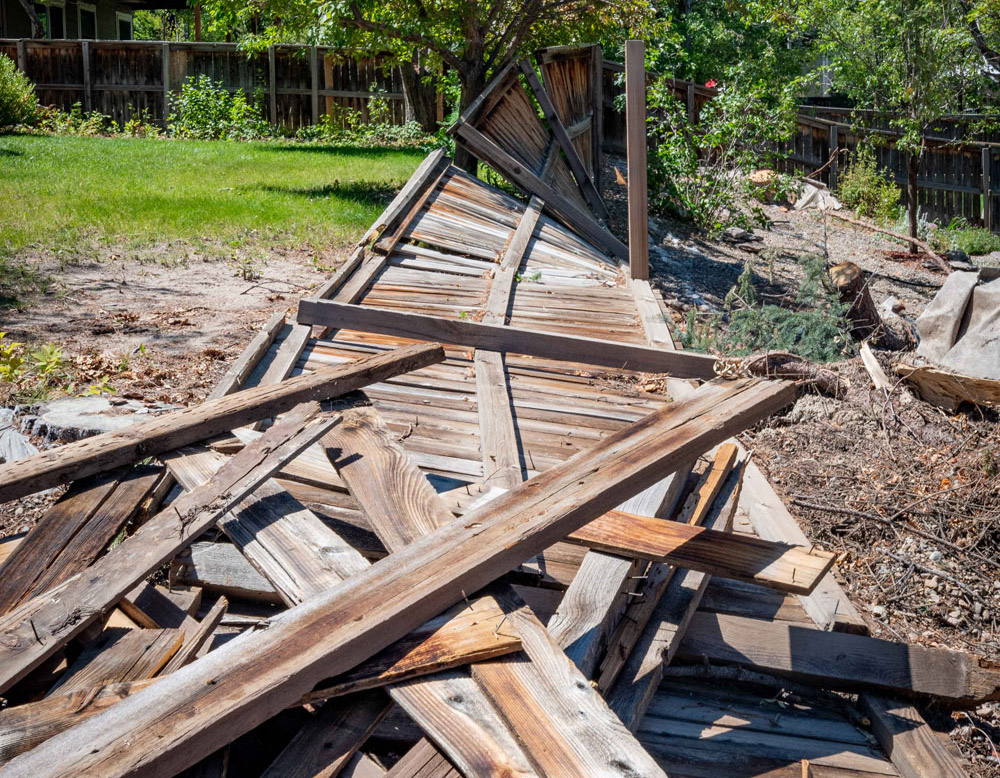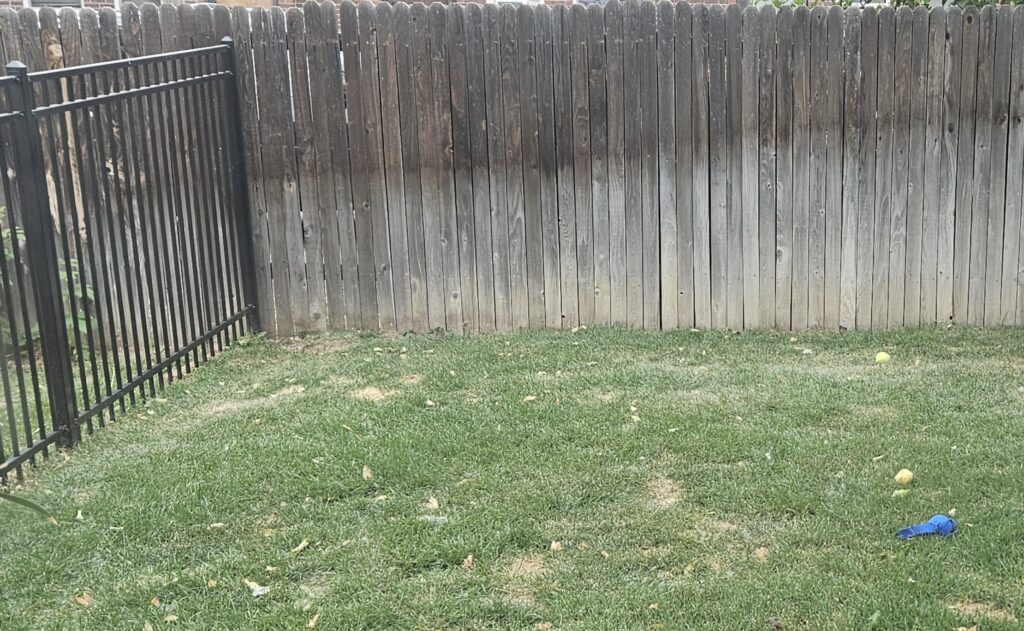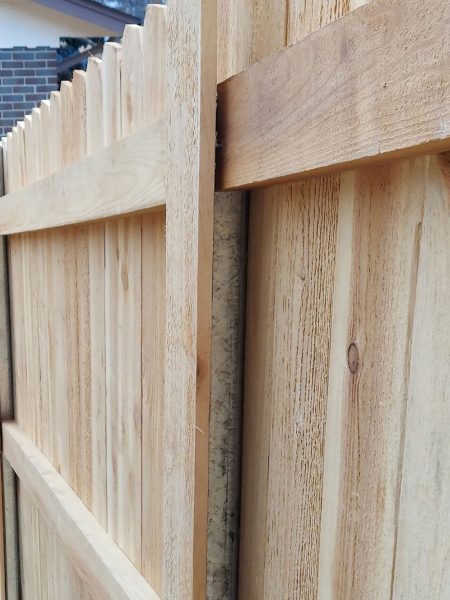If your fence could talk, what would it say? What has it seen while standing in your yard during its lifetime? What has it stood up against, and where has it failed? Many factors impact the life span of a fence, but there are ways to combat those factors to maximize the life span. Let’s talk about the unique conditions along the Colorado Front Range, how fencing is affected, and what to look for in a fence for the best outcome.
Weather Woes for Front Range Fences
If you live at the base of the foothills west of Denver in areas such as Louisville, Arvada, Golden, Ken Caryl, or Littleton, you know the weather that can sweep down those hills. One of the main concerns when it comes to fence durability is the force of the wind. Fences can be among the first things to go in a wind storm.
Even if a fence doesn’t completely fall over from the wind, it may begin to give up the fight and lean badly. This is especially true if the posts aren’t placed in the ground deep enough or if the wood isn’t the right type for underground use.
Rain, snow, and sun are other weather elements that can wreak havoc on your fence. These elements take their toll on almost everything, and wood is no exception. A wooden fence constructed with lower-quality lumber will crack, split, and fade in color much quicker than one made with high-quality wood. Our hot, dry climate, coupled with snow in the winter, makes for a harsh life for a wooden fence.
A Day in the Life of a Residential Fence
Besides the weather, what else affects the fence in your yard? Some things are apparent, like the half-moon-shaped faded area on a wooden fence caused by the arch of your sprinklers summer after summer. Or your dog is jumping up on the fence in that same area, over and over, because that’s where the pesky squirrels run along their handy wooden highway. Once again, the type of wood and fence posts will determine how long your fence will withstand these assaults.
Other variables that affect your fence might be somewhat unseen or slow-progressing. This could be a tree trunk and roots growing and pushing into the fence pickets or unstable soil around the fence posts. A good fence installation company will notice and account for these things when constructing a fence.
Start off on the Right Foot (or Post)
What can you as a homeowner do to help your fence get through its day? The answers include choosing quality lumber or upgrading to Trex fencing, ensuring sturdy fence posts are used, and employing a knowledgeable installation team.
Why Lumber and Hardware Quality Matters
Did you know that the cedar you get at a big box store is rated “standard” or “standard and better”? And did you know there’s a level above that called “appearance grade”? The cedar with the lower two ratings is just ok. It will have knots in it (that eventually pop out), it may have cracks, and it may be warped when you purchase it. At Integrity Fencing, we only stock “appearance grade” lumber. Appearance grade is the type of lumber used inside homes because it needs to look good. We believe in quality from the start, and our supply yard includes cedar pickets and posts that will look great in your yard.
It’s also important to note that cedar fence posts are better than redwood or pine posts. Often, redwood is chosen by fence contractors because it’s more readily available and less expensive than cedar. Redwood can be used on a deck because it’s fastened securely, but it should not be used for fence posts due to its propensity to bow every which way. The level of bowing is quite dramatic: redwood can bow up to a foot out of place and completely ruin a fence, requiring the replacement of the posts.
Pine is excellent for indoor paneling, railings, and other in-home features. But it’s just not suitable for outdoor applications like decking or fences. This is because pine is pressure-treated, a process in which a preservative is injected into the wood to make it last longer. Even though the pine is treated to last longer, this doesn’t apply when it gets repeatedly wet, as it will while outdoors. Compounding the issue is that usually when the pine is purchased, it is still very moist. Once the wet, treated wood is placed in the ground as a fence post, it will begin to twist and bow.
Related post: Why You Want Your Fencing Contractor to Use Quality Lumber
Posts Can Make or Break a Fence
Second, the size and depth of the fence post in the ground create long-term stability. If a fence post is not placed deep enough (24 inches deep per municipal code, and three feet deep for Trex fencing and Post Master steel gate posts), it affects the integrity of the entire fence. It’s the foundation holding up the fence against the wind, dogs, and more, and it needs to be deep enough to support the length of the fence. Just as important is the size or thickness of the fence post. We use a 4’x4’ post for a line post and an eight-foot post for master steel posts to ensure a strong foundation. For our gates, we use a 4’x6’ or the Post Master nine-foot (three feet in the ground) three-inch square steel gate post.
Hire a Skilled Fence Contractor Who Cares
Third, you want an expert installation crew that doesn’t cut corners and understands how to build a sturdy fence. Our crews use Quikrete fast-setting concrete for our fence posts to ensure the posts are set solidly on the same day. We also use stainless steel nails, which are generally stronger than galvanized nails and help hold a fence together for the long term. To head off future issues, during our initial visit to your property to quote the fence, we’ll let you know about any problem trees or branches.
Trex Fences Can Take the Heat (and the wind and the snow)
If you want a worry-free fence that will combat all of the forces we’ve discussed here, you can’t beat Trex fences. The blend of wood and plastic in Trex composite fencing makes it a durable product that is not vulnerable to insect damage or harsh weather conditions. It is far more durable than cedar or vinyl fences and comes with a 25-year warranty from the manufacturer.
In addition, a Trex fence doesn’t have to be stained and won’t fade in color beyond the average initial fading period. When it comes to wind, a Trex fence can withstand winds up to 120mph. The interlocking picket design of Trex fencing distributes the stress from wind evenly across the fence line, making each section incredibly strong.
Related post: Why Trex Fences are a Sound Choice for Homeowners
Checklist for a CO Front Range Fence
Here’s a handy checklist of things to consider before starting your fence project or hiring a fencing contractor:
- Wind exposure: will your fence endure high winds off the foothills? Consider Trex fencing for durability
- Choose high-quality lumber and hardware for the best longevity
- Ensure the right type of wood is chosen for outdoor conditions
- Fence posts should be placed at the right depth to support the fence
- Choose a contractor who cares about the final product
- Want a maintenance-free fence? Go with a Trex fence.




